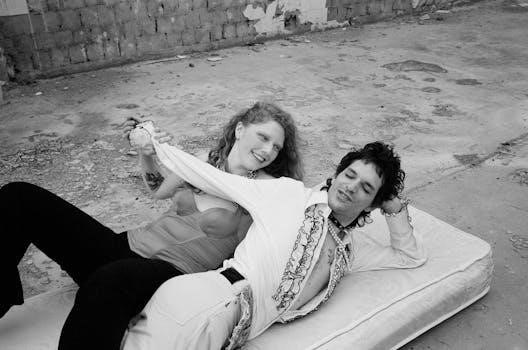Tattoo Placement Guide
Choosing the right tattoo placement is crucial. This guide helps navigate the world of tattoo locations, offering insights for both tattoo enthusiasts and artists. From understanding visibility to considering pain levels, we’ll explore factors influencing placement. Get ready to discover the perfect spot for your ink with our comprehensive tattoo placement guide!
Why Tattoo Placement Matters
Tattoo placement is more than aesthetics; it impacts pain, aftercare, and longevity. Proper aftercare prevents infection and ensures proper healing, which can be harder in areas with bending, stretching, or rubbing, like wrists and knees. Visibility affects how a tattoo is perceived, influencing the size and style of the design. The location alters the vibe, depending on visibility and the tattoo’s size and design.
Placement affects how realistic tattoos appear, with strategic placement enhancing depth and movement. Artists should guide clients in selecting the right placement, as it impacts design, longevity, and satisfaction. Consider if you want to hide or reveal it.
Placement influences access for artists, client pain tolerance, and ink upkeep, including color fading and aftercare. Some meaningful tattoos are placed on the chest over the heart, or on the foot to symbolize one’s path in life. Placement is a major part of the puzzle, especially on a living canvas.
Factors to Consider Before Choosing a Tattoo Placement
When considering a tattoo, placement is as crucial as the design. Various factors influence the final decision, and its essential to consider skin sensitivity and visibility. Think about visibility, pain tolerance, and how the design fits the body part. Areas like the chest, back, or upper arms offer flexibility for larger designs, while wrists or ankles are ideal for smaller, more discreet tattoos.
Also, consider the size of the piece, the chosen design, visibility, and pain tolerance. Remember to consider tattoo placement pain. You should consider where on your body your design will look the best.
Consider your client might work for a company where they need to cover their tattoo. Areas such as the ribcage, hips, thighs, and lower back are ideal for more private tattoos. These locations are easily hidden. It is important to put the tattoo somewhere where it will age well.
Skin Sensitivity
One of the first things to think about is skin sensitivity. Tattoo placement is extremely important, as it influences a lot of factors that go into the clients pain tolerance.
Areas where the skin is thinner or closer to bone tend to be more sensitive, such as the ribs, ankles, and spine. Consider your pain tolerance when selecting a location. Talk to your tattoo artist; he can provide insights into which areas are generally more painful.
Areas like the ribs are more difficult to tattoo. The placement of your tattoo isn’t just about aestheticsit impacts pain, aftercare, and longevity. Proper aftercare is essential to prevent infection and ensure your tattoo heals properly. Tattoos in areas where the skin bends, stretches, or rubs can take longer to heal.
Advise clients to avoid painkillers and alcohol at least two days beforehand. These will thin a persons blood, and their body wont heal as quickly. Blood makes the process more difficult for the artist.
Tattoo Visibility
Consider how visible you want your new tattoo to be. The placement of your tattoo can really change the entire vibe it puts out, mainly depending on how visible you want it to be and the size and style of the tattoo design itself.
Think about visibility and how the design fits the body part. Strategic placement can enhance the illusion of depth and movement in designs. Areas like the chest, back, or upper arms offer flexibility for larger designs, while wrists or ankles are ideal for smaller, more discreet tattoos.
Get one on the front of your body if you want to be able to see it easily. If youd like to hide it or reveal it, consider placement. Your client might work for a company where they need to cover their tattoo. Low Visibility Areas⁚ Areas like the ribcage, hips, thighs, and lower back are ideal for more private tattoos.
Placement matters, especially on a living, breathing canvas. Consider the size of the piece, the chosen design, and visibility.
Popular Tattoo Placement Areas
There are certain areas of the body that are more popular than others for tattoo placement. In addition to the popular arm, leg, and thigh placements, there are numerous other locations where you can choose to place your new ink. As arms are one of the most popular places for a tattoo, we considered making an arm tattoo placement chart too.
Areas like the chest, back, or upper arms offer flexibility for larger designs, while wrists or ankles are ideal for smaller, more discreet tattoos. The best spots for large tattoos are the back, chest, outer thighs and upper arms.
Discover the ins and outs of tattoo placement and be inspired to embrace the colorful world of body art from head to toe.
Quick Tattoo Placement⁚ Consider the size of the piece, the chosen design, visibility, and pain tolerance;
Discover our Tattoo Placement Guide⁚ Finding the Perfect Spot for Your Ink post and stay updated with premier tattoo studio.
Arms and Shoulders
Arms and shoulders are classic and versatile tattoo placements. As arms are one of the most popular places for a tattoo, we considered making an arm tattoo placement chart too. Here are the most popular micro-areas of the arm that may be tattooed (but remember to consider tattoo placement pain as well as meaning). Full sleeve⁚ armor or expressing strong feelings. Upper arm sleeve⁚ protection and strength; Lower arm sleeve⁚ beauty and beliefs.
Placing tattoos lengthwise along the forearm is a commonly requested placement for minimalist tattoos or smaller tattoos but it tends to cause a lot of problems later as clients try to expand their collections. Doing tattoos that wrap around the forearm like an arm band creates the same visual.
An ideal location for a first-time tattoo, work on arms is usually the easiest because of accessibility.
Discover the art of arm tattoo placement with our comprehensive guide. Learn how best to showcase your body art on this versatile canvas.
Back
The back offers a broad canvas, making it ideal for larger, more intricate tattoo designs. It’s a popular choice for those looking to make a statement with their ink. The upper back is often chosen for word tattoos or designs that symbolize guidance.
The back provides ample space for detailed artwork. The spine can be an excellent placement for vertical designs. The shoulder blades can be used for symmetrical pieces. Consider the natural curves and contours of the back to enhance the tattoo’s visual appeal.
When choosing a back tattoo, think about visibility. A lower back tattoo can be easily concealed, while an upper back tattoo can be shown off with certain clothing.
Remember that the back, especially near the spine, can be a sensitive area. Be prepared for a potentially higher level of pain during the tattooing process. Discuss pain management options with your artist.

Chest

The chest is a prominent and personal tattoo placement. Many choose this area for meaningful tattoos placed over the heart, symbolizing deep emotions and personal connections. The chest offers flexibility for both large and smaller designs.
Consider the shape and size of the chest when selecting a design. Symmetrical designs work well across the entire chest, while smaller pieces can be placed on one side. The sternum area can be quite sensitive, so be prepared for a potentially higher level of pain;
Chest tattoos can be easily concealed or revealed depending on clothing choices, offering a balance between privacy and visibility. Think about how the tattoo will look with different necklines and outfits.
The chest is a popular location for both men and women, but the design choices often differ. Men may opt for larger, bolder designs that span the entire chest, while women may prefer more delicate and intricate pieces. Remember that skin sensitivity can vary in different areas of the chest.
Unconventional Tattoo Placements
For those seeking a truly unique statement, unconventional tattoo placements offer a chance to break away from the norm. These placements often involve areas less commonly inked, allowing for creative expression and individuality.
Consider locations like the ears, fingers, or even the palms of the hands. Finger tattoos, while trendy, require careful consideration due to their tendency to fade and blur over time. The inner lip is another unconventional spot, offering a discreet and personal tattoo experience.
Other options include the scalp, which can be concealed by hair, or the soles of the feet, a location known for its pain sensitivity. When exploring unconventional placements, it’s crucial to research the specific challenges and aftercare requirements associated with each area.
Patchwork tattoos, an increasingly popular trend, also fall into this category. This style involves a collection of different-sized tattoos placed without a specific order, creating a unique and eclectic look. Remember to consult with your tattoo artist to ensure the design and placement are suitable for the chosen area.
Tattoo Placement and Pain Tolerance
Pain tolerance is a significant factor when choosing a tattoo placement. Certain areas of the body are more sensitive than others due to the proximity of nerves and bone structure. Understanding these pain levels can help you make an informed decision and prepare for the tattooing process.
Areas with thin skin and less fat, such as the ribs, ankles, and shins, tend to be more painful. Bony areas like the elbows and knees can also intensify the sensation. Conversely, areas with more muscle and fat, such as the outer thighs and upper arms, generally experience less discomfort.

It’s important to consider your personal pain threshold when selecting a placement. If you have a low pain tolerance, you might want to avoid highly sensitive areas or opt for smaller tattoos in those locations.
Remember that pain is subjective, and experiences can vary. However, researching common pain level reports can provide a general guideline. Don’t hesitate to discuss your concerns with your tattoo artist, who can offer advice and potentially use numbing creams to alleviate discomfort.
Tattoo Placement for Artists⁚ Guiding Clients
As a tattoo artist, guiding clients on tattoo placement is paramount. Consider the design’s size, detail, and the client’s anatomy. Smaller, minimalist tattoos suit forearms or wrists, while larger, intricate pieces work well on the back or chest.
Advise clients on how the placement affects the tattoo’s visibility and impact. A visible tattoo on the forearm makes a statement, while one on the ribcage can be more discreet. Discuss their lifestyle and profession to ensure the placement aligns with their personal and professional image.
Explain how certain placements can impact healing. Areas with high friction, like wrists or ankles, may require more aftercare. Also, address pain tolerance. Sensitive areas like the ribs or spine might not be ideal for clients with low pain thresholds;
Ultimately, help clients choose a placement that enhances their design, suits their lifestyle, and ensures a satisfying tattoo experience. This includes discussing long-term considerations such as how the tattoo might look as skin ages and how future tattoos might integrate with the placement.
Aftercare and Healing Considerations by Location
Tattoo aftercare is critical, but it varies based on location. Areas with more movement, like wrists or ankles, require extra attention to prevent irritation. Keep these areas moisturized and avoid tight clothing that can rub against the new tattoo.
For tattoos on the back or chest, breathable clothing is essential to promote air circulation and prevent moisture buildup. Avoid sleeping directly on a new back tattoo to minimize friction and pressure.
Areas like the feet or hands require frequent cleaning due to increased exposure to germs. Use a mild, antibacterial soap and pat the area dry. Be mindful of activities that could expose the tattoo to dirt or bacteria.
Tattoos on the face or neck need extra sun protection. Apply a high SPF sunscreen daily to prevent fading and damage. Be cautious with makeup or skincare products that could irritate the healing skin.
Regardless of location, follow your artist’s specific aftercare instructions. Proper hygiene, moisturizing, and sun protection are key to ensuring a smooth and vibrant healing process. Monitor for signs of infection and consult a professional if needed.
